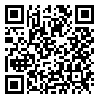Department of Microbiology, Sri Guru Ram Das Institute of Medical Sciences and Research, Amritsar, Punjab, India
Abstract: (135 Views)
Introduction: Skin disruptions exposing subcutaneous tissue provide a moist, warm, and nutrient-rich environment that is conducive to microbial growth. Wound infections can lead to sepsis, limb loss, prolonged hospital stays, increased healthcare costs, and significant morbidity and mortality worldwide. Therefore, this study aimed to identify the aerobic bacterial pathogens responsible for wound infections and determine their antimicrobial susceptibility patterns, thereby providing valuable guidance for clinicians to inform the selection of empirical antimicrobial therapy. Methods: This retrospective study included 1388 wound samples analyzed at the Department of Microbiology, Sri Guru Ram Das Institute, Amritsar, Punjab, India, from July 2021 to June 2022. All specimens underwent bacterial culture and antimicrobial susceptibility testing using standard microbiological techniques, including Gram staining. Identification and susceptibility testing were performed using the VITEK 2 automated system (bioMérieux, Marcy-l’Étoile, France). Minimum inhibitory concentration (MIC) results were interpreted as susceptible, intermediate, or resistant, based on Clinical and Laboratory Standards Institute (CLSI) guidelines. Statistical analyses were performed using SPSS version 26.0 (IBM Corp., Armonk, NY, USA). Chi-square tests were applied for comparing categorical variables (gender and culture positivity). A P-value ≤ 0.05 was considered statistically significant. Results: Out of 1388 wound samples cultured, 707 (50.9%) showed no bacterial growth, and 681 (49.1%) were culture-positive, of which 618 were monomicrobial and 63 were polymicrobial. A total of 744 bacterial isolates were obtained: 602 (81%) were Gram-negative and 142 (19%) were Gram-positive. The most common isolates were Escherichia coli (29%, n=219), followed by Staphylococcus aureus and Klebsiella pneumoniae (17%, n=128 each). Enterobacterales isolates were most susceptible to amikacin (67%), followed by tigecycline (61%) and meropenem (57%), but showed low susceptibility to amoxicillin-clavulanate and ampicillin. Pseudomonas aeruginosa exhibited its highest susceptibility to carbapenems, whereas Acinetobacter baumannii was largely resistant, with the highest susceptibility noted for tigecycline (25%). Gram-positive isolates were highly susceptible to linezolid (91%) and tigecycline (91%). Conclusion: This study details the local pathogen profile from wound infections and their antimicrobial susceptibility patterns, providing critical guidance for empirical therapy and antimicrobial stewardship efforts at our institution.
Keywords: Wound infection, Antimicrobial susceptibility testing, Escherichia coli, Staphylococcus aureus, Klebsiella pneumoniae, carbapenems
Type of Study: Original article |
Subject:
Anti-microbial agents, resistance and treatment protocols
Received: 2023/08/13 | Accepted: 2025/09/10
Received: 2023/08/13 | Accepted: 2025/09/10
Send email to the article author
| Rights and permissions | |
 |
This work is licensed under a Creative Commons Attribution-NonCommercial 4.0 International License. |

This work is licensed under a Creative Commons Attribution-NonCommercial-NoDerivatives 4.0 International License.





